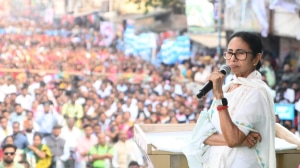Is India a tariff king, as has been claimed by the commentary in the US? Union Finance Minister Nirmala Sitharaman on Tuesday said it is not, with India having reduced the tariff rates to eight, including the zero per cent rate.

“The rationalisation of customs structure for industrial goods was done (in the Budget). To remove seven tariff rates. For those who still believe in the commentary, which was made in the US that India may be the tariff king. No, I want two things to be remembered. Given our system of things, we seek parliamentary approval for deciding on the tariff rate, obtain from the parliament the permission to go up to a certain level but effectively you are at a far lower level. Effective tariff rate is at a far lower level. But what gets published in the gazette would be that level for which you obtained permission from the Parliament and it is that level which appears everywhere and people then tend to think, probably rightly, that’s the rate at which we are imposing tariffs”
“So our procedures have given us the not-so-desirable picture of being very, very restrictive and regressive about tariffs. Many of them are already far lower than the rate at which the gazette notification came after the approval of the Parliament. But even after that, seven tariff rates have been removed in this Budget, reducing the total to just eight. So for those of us who still think there is still a tariff story in India, I want this to be clear, there are only just eight (tariff rates) including the zero rate,” she said.
US President Donald Trump has frequently called India the “tariff king” citing high tariffs. India is currently in talks to finalise a trade deal with the US, its largest trade partner. Indian goods currently attract a 10 per cent baseline US tariff which could continue even after the trade deal comes into effect.
India and the US had earlier decided to conclude the first phase of the proposed bilateral trade agreement by autumn (September–October) this year. However, both sides have now agreed on an interim trade deal before the first tranche, to be finalised by July 9. The interim deal is expected to cover a limited range of goods and services, with the US seeking market access in India for items including agricultural products.
Sitharaman lauded the exporters for swimming against the current and succeeding in it, assuring them of full support from the government “given the uncertainties which are prevailing”. She enlisted three qualities of the Indian exporters — they are growing significantly, they are not just exporting raw goods and commodities but well-engineered products, and they are also finding newer markets. “…they are not just growing as they were growing earlier. Today they are finding technology-infused, high-end products which are getting exported…where innovation and IP will come in handy. India is not just exporting raw goods and commodities, it is exporting well-engineered products which are of high standard. Third, they are also finding newer markets. We know for the last few years Europe is suffering and their consumption has come down. And with recession-like situation in Europe, our exporters have been creative and imaginative enough to also re-route and find out newer markets,” she said.
Story continues below this ad
She said exporters have shown survival instincts and are relying on five Ts — transport and logistics upgradation, targeted support to MSMEs including revamped credit guarantee schemes, trade finance access, trade cluster development, and trade agreements.
There has been more emphasis on signing more trade agreements, she said. “Whether it is UAE, Australia, EFTA area, UK now and with the US and European Union negotiations are going on and should come to a conclusion sooner. So emphasis is being made for getting more free trade agreements signed. So if all this is on, the features of Indian exports are also transitioning. India’s total exports reached an all-time high of $825 billion, achieving 6 per cent growth over the previous year. And a significant $466 billion over 2013-14,” she said.
There has also been deepening participation in global value chains, the Finance Minister said. “Apple is one classic example. It shows what level of value addition can happen within India. Apple’s India’s iPhone manufacturers have crossed 20 per cent domestic value addition,” she said.
She said the production-linked incentive (PLI) schemes have transformed India’s export basket from traditional commodities to high-value products. “PLI-supported exports have surpassed Rs 5.31 lakh crore or $62 billion. The items that went through it were — large-scale electronics manufacturing, pharmaceuticals, food processing, telecom products,” she said
Sitharaman pointed out that private participation is picking up, but it can be even faster. “For the sake of our exporters, we all need to continue to innovate and need to bring more support for them. What is more important is that (for) risk-sharing facilities, hedging instruments, we need creative solutions and also for advisory support,” she said.

































